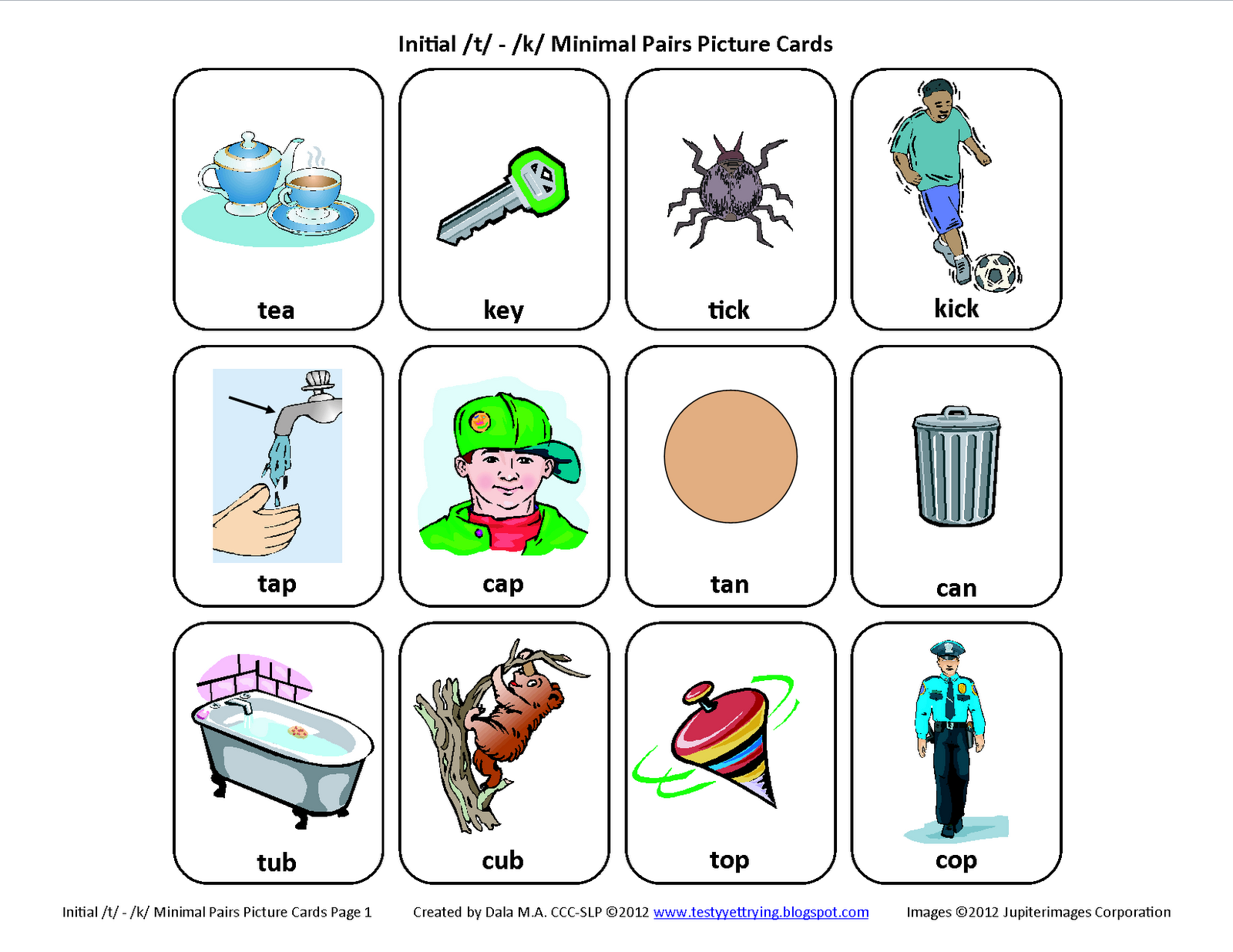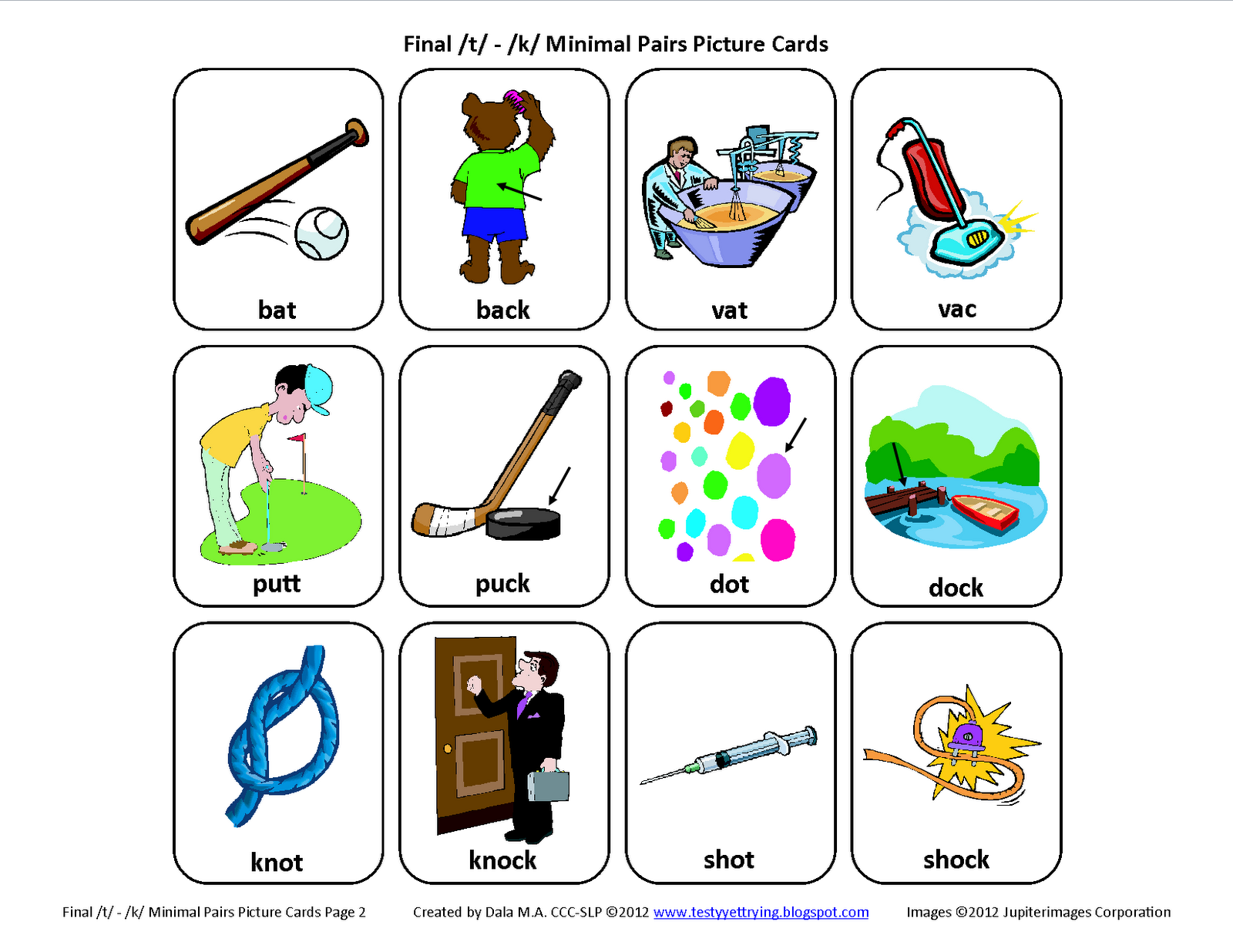K T minimal pairs are crucial in the realm of language learning, particularly for those mastering the intricacies of phonetics and phonology. These pairs not only help learners distinguish between similar sounds but also enhance their overall pronunciation skills. In this article, we will delve into the definition of K T minimal pairs, their significance in language acquisition, and practical tips for using them effectively.
Understanding the concept of minimal pairs is essential for language learners, as it highlights the relationship between phonemes and meaning in a language. K T minimal pairs specifically focus on the contrasting sounds of /k/ and /t/, which can often lead to confusion for non-native speakers. By exploring various examples and applications of these pairs, we aim to equip learners with the tools to improve their pronunciation and comprehension.
As we navigate through the intricacies of K T minimal pairs, we will cover their definition, examples, and practical exercises to help learners practice these sounds. Additionally, we will provide valuable resources and references for further exploration. Whether you're a language teacher or a student, this comprehensive guide will serve as a valuable resource in your language learning journey.
Table of Contents
- Definition of K T Minimal Pairs
- Importance of K T Minimal Pairs in Language Learning
- Examples of K T Minimal Pairs
- Practical Exercises for K T Minimal Pairs
- Teaching Tips for K T Minimal Pairs
- Common Errors with K T Sounds
- Resources for Learning K T Minimal Pairs
- Conclusion
Definition of K T Minimal Pairs
K T minimal pairs refer to pairs of words that differ by only one phoneme, specifically the sounds /k/ and /t/. These pairs are instrumental in highlighting the phonetic distinctions that can change the meaning of words. For instance, the words "cat" and "tat" exemplify how a single sound can alter a word's identity and meaning.
Understanding Phonemes
Phonemes are the smallest units of sound in a language that can distinguish meaning. In English, the /k/ sound can be found in words like "cat," while the /t/ sound appears in words like "tap." Recognizing and practicing these sounds is essential for clear communication and effective language use.
Importance of K T Minimal Pairs in Language Learning
Learning to distinguish between K T minimal pairs is vital for several reasons:
- Pronunciation Improvement: Practicing minimal pairs helps learners develop clearer and more accurate pronunciation.
- Listening Skills: Exposure to minimal pairs enhances listening skills, enabling learners to identify subtle differences in sounds.
- Vocabulary Expansion: Understanding minimal pairs can lead to increased vocabulary as learners explore various word forms.
- Confidence Building: Mastering K T minimal pairs fosters confidence in speaking and conversing in the target language.
Examples of K T Minimal Pairs
Here are some common examples of K T minimal pairs that learners can practice:
- cat - tat
- cap - tap
- kite - tight
- coat - tote
- cane - tain
These examples illustrate how differing sounds can lead to entirely different meanings, emphasizing the importance of mastering these phonetic distinctions.
Practical Exercises for K T Minimal Pairs
To effectively practice K T minimal pairs, learners can engage in various exercises, such as:
- Listening Practice: Listen to recordings of minimal pairs and repeat them to improve pronunciation.
- Shadowing: Shadow native speakers while they pronounce minimal pairs to develop a natural rhythm and intonation.
- Writing Exercises: Write sentences using minimal pairs to reinforce understanding and application.
- Peer Practice: Pair up with a study partner to practice pronunciation and provide feedback.
Teaching Tips for K T Minimal Pairs
For educators looking to teach K T minimal pairs effectively, consider these tips:
- Introduce minimal pairs gradually, starting with familiar words.
- Utilize visual aids and flashcards to reinforce learning.
- Incorporate games and interactive activities to make learning engaging.
- Encourage students to record themselves and listen for improvement.
Common Errors with K T Sounds
Many learners encounter common errors when pronouncing K T sounds. Some frequent mistakes include:
- Confusing /k/ and /t/ sounds, leading to miscommunication.
- Omitting sounds in rapid speech.
- Overgeneralizing rules from their native language.
Identifying and addressing these errors is crucial for improving pronunciation and comprehension.
Resources for Learning K T Minimal Pairs
Several resources can aid learners in mastering K T minimal pairs:
Conclusion
In conclusion, mastering K T minimal pairs is essential for language learners seeking to improve their pronunciation and communication skills. By practicing these pairs and understanding their significance, learners can enhance their language proficiency and gain confidence in their speaking abilities. We encourage you to explore the provided resources, engage in practical exercises, and share your experiences in the comments below. Together, we can foster a community of learners dedicated to language mastery.
Thank you for reading this article on K T minimal pairs! We hope you found it informative and useful. Be sure to check back for more articles on language learning, and don’t hesitate to share your thoughts or questions in the comments section.
You Might Also Like
Naked Women DamplopsPush Button Switch Start: Understanding The Mechanism And Its Applications
Ultimate Guide To Mini Skillet Cornbread: A Delicious Treat For Every Occasion
Sample Sister Of The Groom Speech: A Heartfelt Tribute
Everything You Need To Know About Bubble Gum Gumball Machines
Article Recommendations
- Unveiling The Life Of Cbs Anchor Vladimir Duthiers And His Wife
- Mitch Mcconnells Health Update Has He Been Released From The Hospital
- Ultimate Guide To The Pretty Scale Test Beauty Measurement Decoded


